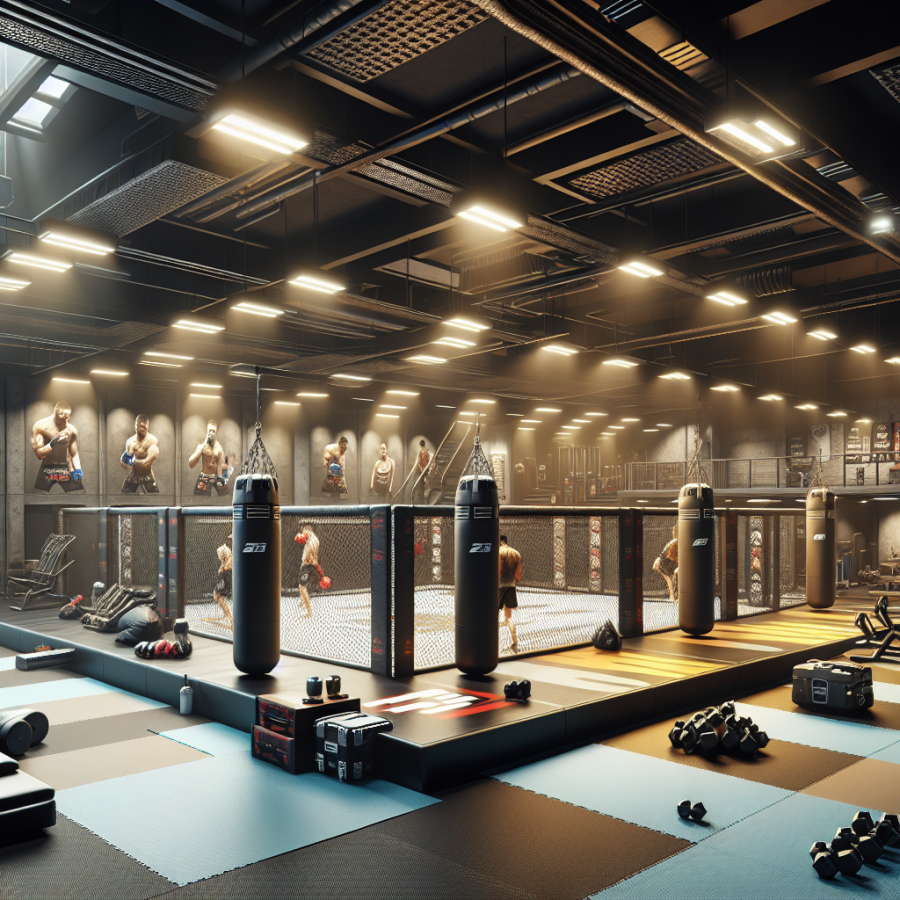Harnessing Inner Strength: Techniques and Training Philosophies from MMA Experts
Harnessing inner strength is not just about physical capability; it's an amalgamation of mental fortitude, emotional resilience, and a robust psychological framework that together forge the warrior spirit synonymous with mixed martial arts (MMA). MMA experts and coaches often emphasize the importance of inner strength as it can significantly influence the outcome of a fighter's journey, both inside the octagon and in life.
Techniques for developing inner strength take a multi-faceted approach. Breathing exercises are a fundamental aspect of training, as controlled breathing not only helps to improve oxygen efficiency but also assists in stress regulation. Fighters are often taught various breath control techniques that include diaphragmatic breathing and rhythmic breathing patterns to help maintain composure and focus during high-pressure situations.
Visualization and mental rehearsal play a critical role. Fighters frequently spend time visualizing successful combat scenarios, which implants a sense of preparedness and boosts confidence. By mentally simulating fights, athletes can condition their mind to remain calm under duress and to seamlessly execute techniques they've been drilling.
Another key segment of inner strength training involves stress inoculation. Gradual exposure to stressors, in a controlled environment, allows fighters to become accustomed to the adrenaline and pressure that accompany an actual fight. Sparring sessions are designed to mimic the intensity of a real bout, teaching fighters to react instinctively and efficiently under stress.
MMA experts also incorporate emotional resilience training, helping fighters to manage fear, doubt, and anxiety. This is often done through psychological conditioning, where athletes learn to reframe negative thoughts, focus on controllable elements, and set realistic but challenging goals.
The role of a strong support system cannot be underestimated in this equation. Coaches and trainers also act as mentors, encouraging fighters to push beyond their perceived limits and cultivating an environment where athletes can share their fears and stresses openly, developing trust and camaraderie that translate into inner strength.
Training philosophies from MMA experts vary, but they converge on the idea that inner strength is a muscle that requires constant nurturing. A common philosophy is the principle of incremental overload, in which athletes gradually increase their training intensity. This not only enhances physical capabilities but also develops mental toughness as fighters learn to endure and overcome increasing levels of challenge.
Functional training is another predominant philosophy. It aims to condition the body in an all-encompassing manner, focusing on exercises that improve core stability, balance, agility, and strength.
Read also:
Unlocking Your Potential: An In-depth Guide to CrossFit Training
Transformative Fighting Strategies: Lessons Learned Inside the MMA Laboratory
As we delve deeper into the realm of mixed martial arts, it's crucial to recognize that MMA as a sport is not only about physical prowess and brute strength; it is also an intellectual pursuit where strategy and mental fortitude are paramount. In the MMA laboratory—a term that encapsulates the training facility, sparring sessions, and every aspect of fight preparation—athletes and coaches alike are constantly experimenting with and refining their approaches to combat. What emerges are transformative fighting strategies that have the potential to revolutionize the way fighters train and compete. Here are some key lessons learned from this dynamic environment.
**Adaptive Fighting Styles**
One primary insight from the MMA lab is the importance of developing an adaptive fighting style. Mixed martial arts is a blend of various disciplines, and while it may be beneficial to specialize in one, it's imperative to be well-versed in others. The ability to switch between striking techniques from Muay Thai to the grappling maneuvers of Brazilian Jiu-Jitsu can throw an opponent off balance and create openings. A prime example of adaptive fighting is seen when a predominantly stand-up fighter learns to anticipate and counter takedown attempts, or when a wrestler incorporates striking elements to set up more effective takedowns.
**Data-Driven Performance Analysis**
The use of technology and data analysis is revolutionizing how fighters prepare. Modern fighters and their teams are leveraging data from past fights, training sessions, and even their opponent's history to make informed decisions about their training focus. Variables such as strike accuracy, takedown success rate, and energy expenditure are meticulously analyzed to tailor a fighter's approach. This scientific method encourages a move away from a one-size-fits-all training regimen to a more personalized, data-driven program that can significantly improve performance.
**Psychological Conditioning**
Mental toughness and psychological resilience are as critical as physical training in the MMA lab. Fighters are often put through various mental conditioning drills that aim to improve focus, manage stress, and handle the psychological pressures of a fight. Visualization techniques, meditation sessions, and sports psychology are leveraged to train the mind for battle. Building confidence through enforced adversity in training can lead to a transformative improvement in a fighter's composure and ability to make strategic decisions under duress during a match.
**Nutritional Strategies for Peak Performance**
Understanding the role of nutrition in combat sports has led to the development of sophisticated dietary plans designed to optimize performance.




